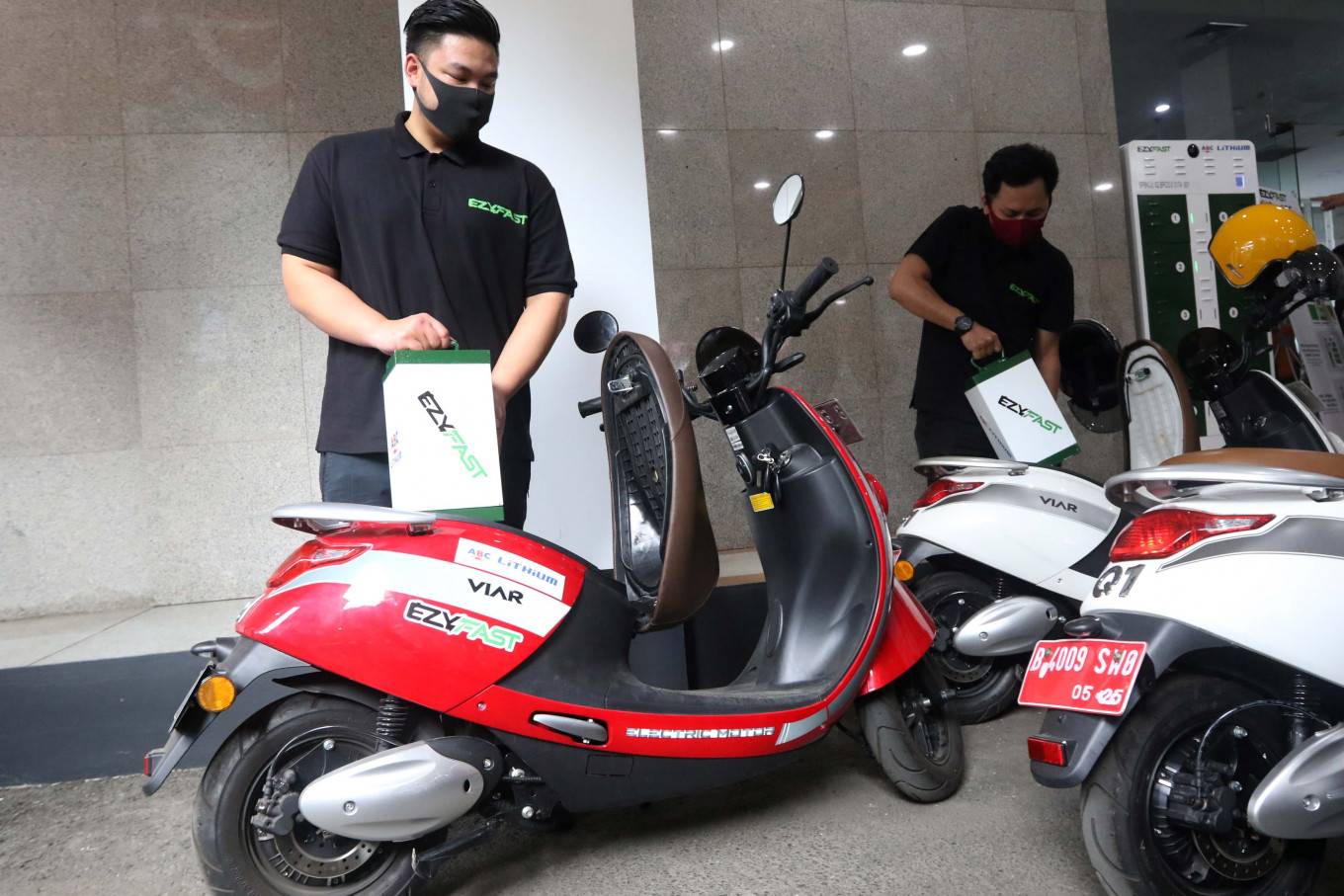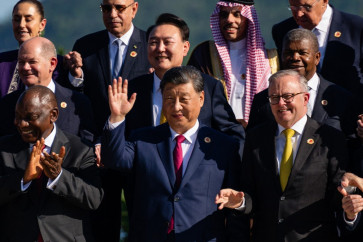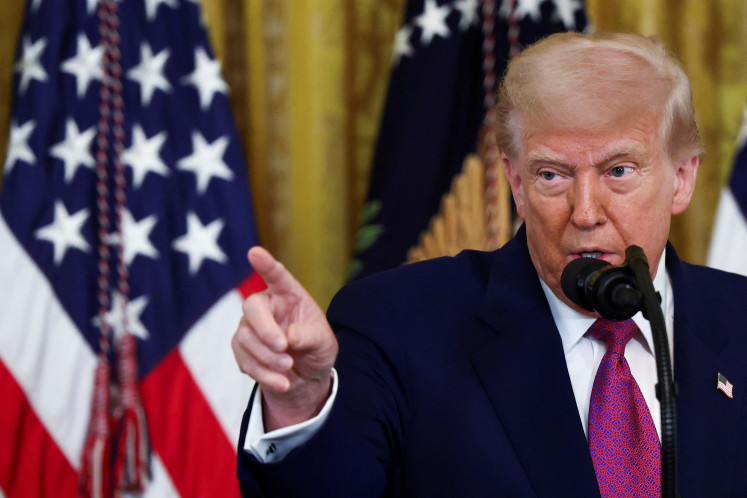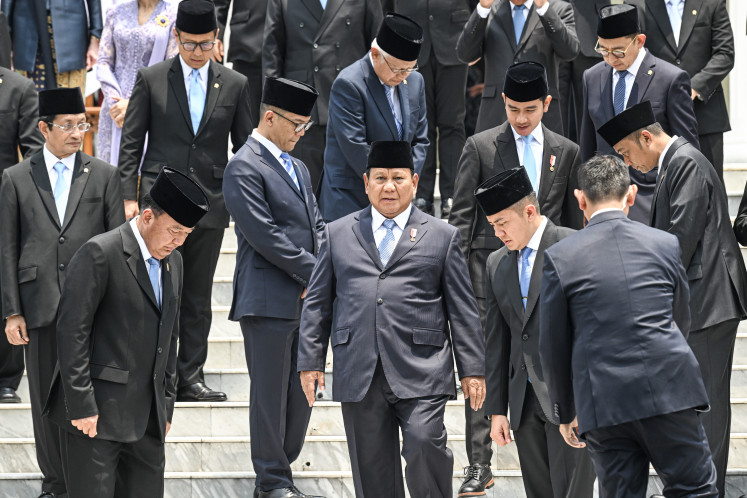Popular Reads
Top Results
Can't find what you're looking for?
View all search resultsPopular Reads
Top Results
Can't find what you're looking for?
View all search resultsFuel subsidy reform is key to unlocking Indonesia’s EV revolution
A balanced approach to reallocating subsidies from fossil fuel to electric cars as part of a comprehensive strategy to de-incentivize the former and incentivize the latter will help drive the country's EV transition toward a greener and more sustainable future.
Change text size
Gift Premium Articles
to Anyone
T
he government has recognized the transformative shift in the global automotive sector driven by the rapid growth of electric vehicles (EVs), and has adopted a market penetration target of 10 percent by 2030.
Subsidies for transportation fuels are currently holding back this transition; therefore major reform and realignment are needed to remove incentives for fossil fuel-powered vehicles to meet the government’s target.
Fuel subsidies have been very challenging to control and disproportionately benefit private vehicle owners and the well off. In 2022 alone, energy subsidies totaled Rp 502 trillion (US$33 billion), with over half of it going to fuel subsidies.
Considering that the majority of motorized vehicles – most of them internal combustion engine (ICE) cars – are private, a significant portion of fuel subsidies benefits private vehicle owners.
If the government is to realize its transition toward EVs as planned, then fiscal policies, including subsidies, will have to create incentives for people to switch from ICE cars to EVs. Given the strain subsidies put on the public budget, any increases in EV subsidies must be balanced with decreases in fossil fuel subsidies to avoid subsidized ICE vehicles from competing with even more subsidized EVs.
This reallocation of subsidies will contribute to a greener future while simultaneously offering an opportunity to reduce inefficient fuel subsidies.
However, it is still important to ensure that any reform has positive social impacts. For this reason, public spending in general and transport subsidies in particular should be allocated in line with needs in a way that not only incentivizes the shift to electric cars, but also supports public transit and two-wheelers.
One possible starting point is for the government to reallocate a portion of its spending on transport fuel subsidies to EV subsidies. The reallocated amount can be gradually increased over time as the transition progresses, with more and more EVs entering the market while the number of ICE vehicles decreases. Reallocating existing subsidies will fund the expenditure necessary to meet the government’s targets without increasing the overall burden of subsidies.
Based on the successful increase in EV uptake in the international market, action is needed in four key areas to meet the government’s targets.
First is the development of charging infrastructure, which is likely the most critical point for the broad adoption of EVs. State funds can be used to establish a comprehensive network of charging stations in both urban and rural areas.
Second is the provision of financial incentives for consumers. State funding can be used to expand the types of incentives and subsidies for EV purchases, such as rebates, tax credits and other types of subsidies that can reduce the upfront cost of EVs and make them more affordable to a wider variety of consumers. In order to ensure inclusion and equity, these incentives can also target low-income individuals and public transportation.
Third is the provision of fleet electrification incentives. The government can also provide incentives and assistance to fleet operators in the form of grants, subsidies or bulk purchase programs to encourage them to migrate to electric vehicles. In order to have a significant impact on overall vehicle emissions, fleet electrification initiatives should target both private and public fleets.
Fourth and final is running public awareness and education campaigns. Being a relatively new technology in Indonesia, there are still various misconceptions and doubts among the general public about transitioning to EVs. A comprehensive public awareness campaign emphasizing the environmental benefits, economic savings and technological breakthroughs of EVs can address common misconceptions and boost consumers’ confidence and interest in EVs.
Once local capacity in manufacturing EVs is aligned with market demand and an adequate charging network is achieved, the government can start thinking about imposing larger levies on ICE vehicles. The revenue generated can then be utilized strategically to increase support for and further accelerate the transition to EVs.
By imposing higher taxes on ICE cars, the government creates a financial disincentive for consumers to choose conventional ICE vehicles. This policy would encourage customers to consider EVs as more financially viable alternatives, thereby increasing demand for cleaner and more sustainable transportation options.
Imposing higher taxes on ICE cars will not only generate revenue, but also serve to internalize the externalities associated with conventional vehicles, such as air pollution and carbon emissions. By accurately calculating the environmental and societal costs of ICE cars, the government can create a level playing field that reflects the true environmental impacts of different vehicle types in their pricing. As a result, customers will be incentivized to make environmentally conscious decisions and opt for cleaner transportation options.
In the dual pursuit of a more sustainable future and continuing industrial competitiveness, it is time to engage in constructive discourse on the future of the automotive industry. Indonesia should confront the difficult choices in the allocation of public funds and recognize the potential of EVs as a vital piece of the puzzle in building a greener and more prosperous nation.
***
The writer is an energy analyst with the International Institute for Sustainable Development.










